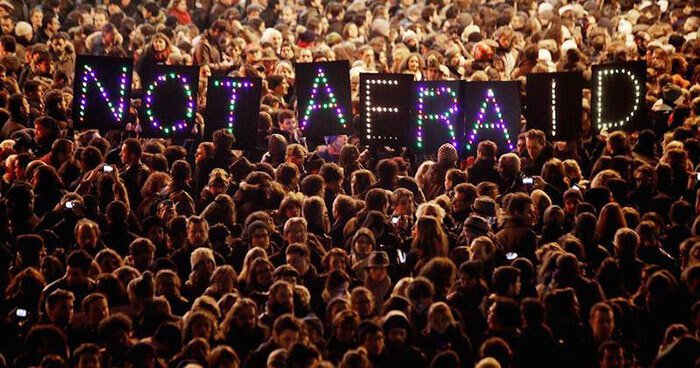Below you will find an article that analyzes the Black Lives Matter Movement. The authors seek to understand how a movement conducted via social media and other online technologies works. Read the article and answer the following questions:
- How did the hashtag “Black Lives Matter” evolve? How does the movement transition from an online presence to action “on the ground”?
- What is the upside to a movement evolving in this way? What is the downside?
- What is the future of such a movement?
Feel free to add any other comments you wish.

Harry Hoke
Question 1: The article traces the evolution of the #blacklivesmatter from a relatively small following to an established organization with a strong online network and presence. The article traces this evolution through nine periods, which it correlates not with equal quantities of time, but with specific events. According to the article, the Black Lives Matter website initially did not receive much traffic (for the first two periods), and the use of the hashtag was primarily limited to a few activists. However, in the wake of the Ferguson protests, the hashtag and the website (traced by its first archival by the WayBack) received spikes in their usage. The spike then allowed for more nodes in the network and conversation around the hashtag to develop. This lull and spike is a trend noted throughout the article across periods of the digital movement presence. In terms of the process of establishment online to mobilization on the ground, the article seems to suggest that the little-used internet framework was created prior to its first spike, and allowed for quicker mobilization when disruption during the Ferguson protests occurred. Thus, the translation from a digital presence to an “on the ground” presence is due to the creation of a framework that allows for quicker mobilization among protesters.
Question 2: An upside to a movement developing in this way is that it allows for larger mobilization at the first need for disruption. Because the network is established before the need to disrupt, when the need for protest arises it can be used to mobilize large numbers of participants. A downside of this type of movement development is that it could difficult to control or centralize mobilization. The network of nodes presented in the article as the digital BLM network demonstrates how the dissemination of information stems from multiple groups of sources that tend to conglomerate into nodes that then proceed to interact with each others as entities. If information is being circulated in this manner it may be difficult to distribute single messages regarding mobilization or information from a single choice.
Question 3: There is a future to the movement as a network of information distribution and mobilization opportunities. Though, as the node network shown in the article demonstrates, the teleology of the movement is towards greater centralization, the dialogue between multiple clouds of information circulation still presents a challenge. As long as the issue remains, this movement will have a future, as the infrastructure to quickly disseminate information is in place. Thus, the movement will retain its mobilizing power, even as it works through difficulty in organizing.
Kelly Quinn
1.
The hashtag “Black Lives Matter” did not become prominent on twitter until the grand jury’s non-indictment of Robert McCullough for the death of Michael Brown. Its presence was then solidified into mass consciousness after the non-indictment of Eric Garner’s killer as well as simultaneous protests world wide against police brutality. The extensive use of the hashtag at non-indictment protests helped it to reach a much larger audience. #blacklivesmatter grew from an expression of solidarity and sympathy for victims to a symbol that represented a large scale social movement. These events “helped to lift #blacklivesmatter from a slogan largely unknown outside activist circles to a global phenomenon engaged by much broader publics.” (34) This online attention sparked offline protests and activism, which furthered its popularity online through social media coverage of the events.
2.
The upside of movement evolving in this way is its ability to circulate information on a relatively new and easily accessible platform. This news can offer alternative narratives without the reliance on mainstream news outlets, which are typically biased one way or the other. “The general idea here is that social media helps level a media playing field dominated by pro-corporate, pro-government, and (in the United States) anti-Black ideologies” (8) In addition, this type of movement provides participants with an opportunity to engage in online conversation, donate money and resources and help them feel connected to a larger community. The downside to this type of movement is that it lacks formal organization and large scale mobilization. The top tweets analyzed in this article found no attempt to coordinate movement action. This implies that participants of online BLM were “more interested in consuming information and participating digitally than in offline participation.”(84)
3.
Such a movement is promising in its ability to spread information and educate people, especially in the face of biased mainstream news outlets. However, these movements are limited in their ability to mobilize collective action. Unless media users are motivated by the content accompanied by the hashtags to join a local or national organization, the movement may be just an innovative route for distributing alternative information. The article acknowledges that a portion of black youths are not being reached by BLM’s messages and that young people in general are disengaged from politics and civic engagement. While hashtag movements excel at distributing information, an additional method may have to be employed in order to translate these grievances into action on the streets.